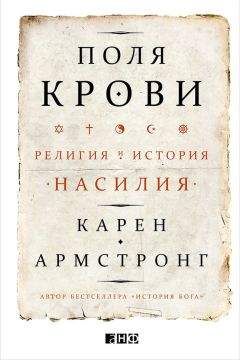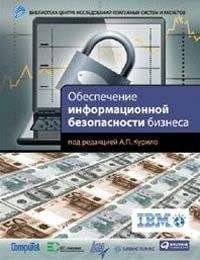558
Ibid., pp. 26–28
Ibid., pp. 73–81; Дарий. надпись 19 в Сузах, ibid., p. 73
Cross, Canaanite Myth, pp. 293–323; Mary Douglas, Leviticus as Literature (Oxford and New York, 1999); Douglas, In the Wilderness: The Doctrine of Defilement in the Book of Numbers (Oxford and New York, 2001), pp. 58–100; Niditch, War in the Hebrew Bible, pp. 78–89; 97–99; 132–53
Лев. 25
Лев. 19:34
Douglas, Leviticus as Literature, pp. 42–44
Быт. 32:30
Числ. 20:14–22
Быт. 1:31
Неем. 4:17
Числ. 31
Числ. 31:19
2 Пар. 28:9–11
2 Пар. 28:15
Ис. 45:5
Зах. 14:12
Зах. 14:16. см.: также Мих. 4: 1–5, 5; Агг. 1:6–9
Ис. 60:1–10
Ис. 60:11–14
Лк. 2:1
Robert L. O’Connell, Of Arms and Men: A History of War, Weapons and Aggression (New York and Oxford, 1989), p. 81
E. N. Luttwak, The Grand Strategy of the Roman Empire (Baltimore, 1976), pp. 25–26; 41–42; 46–47; Susan P. Mattern, Rome and the Enemy: Imperial Strategy in the Principate (Berkeley, 1999), pp. xii; 222
O’Connell, Arms and Men, pp. 69–81; John Keegan, A History of Warfare (London, 1993), pp. 263–71
W. Harris, War and Imperialism in Republican Rome (Oxford, 1979), p. 56
Ibid., p. 51
Тацит, Жизнеописание Юлия Агриколы, 30. см.: английский перевод в: Loeb Classical Library. [Перевод А. Бобовича. Цит. по: Корнелий Тацит. Сочинения в двух томах. Том первый. Анналы. Малые произведения. – Ленинград: Наука, 1969. – Прим. пер.]
Harris, War and Imperialism, p. 51
Martin Hengel, Judaism and Hellenism: Studies in their Encounter in Palestine during the Early Hellenistic Period, 2 vols, trans. John Bowden (London, 1974), pp. 294–300; Elias J. Bickerman, From Ezra to the Last of the Maccabees (New York, 1962), pp. 286–89; The Jews in the Greek Age (Cambridge, Mass., and London, 1990), pp. 294–96; Reuven Firestone, Holy War in Judaism: The Rise and Fall of a Controversial Idea (Oxford and New York, 2012), pp. 26–40
Дан. 10–12
Дан. 7:13–14
Richard A. Horsley, ‘The Historical Context of Q’, in Richard A. Horsley and Jonathan A. Draper, eds, Whoever Hears You Hears Me: Prophets, Performance and Tradition in Q (Harrisburg, Penn., 1999), pp. 51–54
Gerhard E. Lenski, Power and Privilege: A Theory of Social Stratification (Chapel Hill and London, 1966), pp. 243–48.
John H. Kautsky, The Politics of Aristocratic Empires, 2nd ed. (New Brunswik and London, 1997), p. 81
Horsley, ‘Historical Context of Q’, p. 154
Flavius Josephus, The Life, trans. H. St. J. Thackeray (Cambridge, Mass., 1926), 10–12; Alan Mason, ‘Was Josephus a Pharisee?: A Re-Examination of the Life, 10–12’, Journal of Jewish Studies, 40 (1989); Alan F. Segal, Paul the Convert: The Apostolate and Apostasy of Saul the Pharisee (New Haven, Conn., and London, 1990), pp. 81–82
Иосиф Флавий. Иудейская война VI 51. см.: английский перевод в: G. A. Williamson, Josephus: The Jewish War (Harmondsworth, 1959) [Перевод Я. Чертка. Цит. по: Иосиф Флавий, Иудейская война. – Минск: Беларусь, 1991 – Прим. пер.]
Иосиф Флавий. Иудейские древности XVII 157. см.: английский перевод в: Richard A. Horsley, Jesus and the Spiral of Violence: Popular Jewish Resistance in Roman Palestine (Minneapolis, 1993 ed.), p. 76.
Иосиф Флавий. Иудейская война, I 655
Ibid., II 3.
Ibid., II 11–13
Ibid., II 57
Ibid., II 66–75
John Dominic Crossan, God and Empire: Jesus against Rome, Then and Now (San Francisco, 2007), pp. 91–94.
Иосиф Флавий, Иудейские древности, XVIII 4–9; см.: Horsley, Spiral of Violence, p. 81; ср. Иудейская война, II 117
Иудейская война, II 169–74.
Филон. О посольстве к Гаю. См. Philo, On the Embassy to Gaius, trans. F. H. Colson (Cambridge, Mass., 1962), 223–24. [Перевод О. Левинской. Цит. по: Филон Александрийский. Против Флакка; О посольстве к Гаю. / Иосиф Флавий. О древности еврейского народа; Против Апиона. – Москва / Иерусалим: Еврейский университет в Москве / Гешарим, 1994. – Прим. пер.]
Иудейские древности, XVIII 292
Иудейские древности, XVIII 284
Иудейские древности, XX 97–98
Иудейская война, II 261–263. [Перевод М. Финкельберг. Цит. по: Иосиф Флавий. Иудейская война. – Москва / Иерусалим: Мосты культуры / Гешарим, 2008. – Прим. пер.]
Иудейские древности, XVIII 36–38; Horsley, ‘Historical Context of Q’, p. 58
John Dominic Crossan, Jesus: A Revolutionary Biography (New York, 1994), pp. 26–28
A. N. Sherwin-White, Roman Law and Roman Society in the New Testament (Oxford, 1963), p. 139. Мф. 18:22–33; 20: 1–15; Лк. 16:1–13; Мк. 12:1–9
Мф. 2:16
Мф. 14:3–12
Мф. 10:17–18
Marcus Borg, Jesus: Uncovering the Life, Teachings, and Relevance of a Religious Revolutionary (San Francisco, 2006), pp. 67–68 (Борг М. Иисус. Загадка революционного гения. – М.: Эксмо, 2014.)
Мф. 4:1–11; Мк. 12–13; Лк. 4:1–13
Лк. 10:17–18
M. Lewis, Ecstatic Religion: An Anthropological Study of Spirit Possession and Shamanism (Baltimore, 1971), pp. 31, 32, 35, 127
Мк. 5:1–17; Crossan, Jesus, pp. 99–106
Лк. 13:31–33
Мф. 21:1–11; Мк. 11:1–11; Лк. 19: 28–38
Мф. 21:12–13
Horsley, Spiral of Violence, pp. 286–89; Sean Frayne, Galilee: From Alexander the Great to Hadrian, 323 BCE to 135 CE. A Study of Second Temple Judaism (Notre Dame, Ind., 1980), pp. 283–86
Мф. 5:39, 44
Мф. 26:63
Лк. 6:20–24
Мф. 12:1–12; 23
Лк. 13:13
Лк. 9:23–24
Лк. 1:51–54
Мк. 12:13–17; Horsley, Spiral of Violence, pp. 306–16
F. F. Bruce, ‘Render to Caesar’, in F. Bammel and C. F. D. Moule, eds, Jesus and the Politics of His Day (Cambridge, 1981), p. 258
Мк. 12:38–40
Horsley, Spiral of Violence, pp. 167–68
A. E. Harvey, Strenuous Commands: The Ethic of Jesus (London and Philadelphia, 1990), pp. 162, 209
Лк. 14:14, 23–24; Crossan, Jesus, pp. 74–82
Лк. 6:20–21. Crossan, Jesus, p. 61, отмечает, что здесь использовано именно слово «нищие» («птохóс»), а не «бедняки» («пéнес»)
Crossan, Jesus, pp. 68–70
Лк. 6:24–25
Мф. 20:16
Мф. 6:11–13
Gerd Theissen, The First Followers of Jesus: A Sociological Analysis of the Earliest Christians, trans. John Bowden (London, 1978), pp. 8–14
Мк. 1:15; перевод мой
Мф. 9:36
Warren Carter, ‘Construction of Violence and Identities in Matthew’s Gospel’, in Shelly Matthews and E. Leigh Gibson, eds, Violence in the New Testament (New York and London, 2005), pp. 93–94
John Pairman Brown, ‘Techniques of Imperial Control: The Background of the Gospel Event’, in Norman Gottwald, ed., The Bible of Liberation: Political and Social Hermeneutics (Maryknoll, NY, 1983), pp. 357–77; Gerd Theissen, The Miracle Stories: Early Christian Tradition (Philadelphia, 1982), pp. 231–44; Warren Carter, Matthew and the Margins: A Socio-Political and Religious Reading (Sheffield, 2000), pp. 17–29, 36–43, 123–27; 196–98
Мф. 6:10
Лк. 6:30–31
Лк. 6:31–38
Деян. 2:23, 32–35; Флп 2:9
Ср. Мф. 10:5–6
James B. Rives, Religion in the Roman Empire (Oxford, 2007), pp. 13–20
Ibid., pp. 104–14
Jonathan Z. Smith, ‘Fences and Neighbours: Some Contours of Early Judaism’, in Imagining Religion: From Babylon to Jonestown (Chicago and London, 1982), pp. 1–18; John W. Marshall, ‘Collateral Damage: Jesus and Jezebel in the Jewish War’, in Matthews and Gibson, eds, Violence in the New Testament, pp. 38–39; Julia Galambush, The Reluctant Parting: How the New Testament’s Jewish Writers Created a Christian Book (San Francisco, 2005), pp. 291–92
Деян. 5:34–42
Деян. 13:44; 14:19; 17:10–15
1 Кор. 11:2–15
1 Кор. 14:21–25
Рим. 13:1–2
Рим. 13:6
1 Кор. 7:31
Деян. 4:32, 34–35
1 Кор. 12:12–27
Лк. 24:13–32
Флп. 2:3–5




